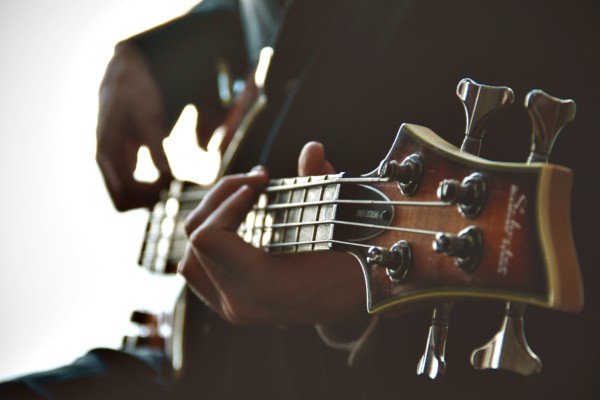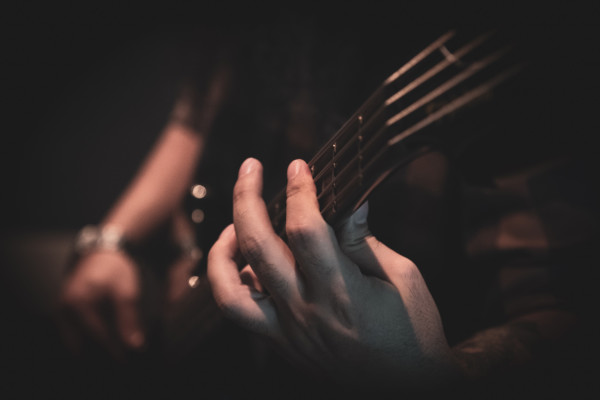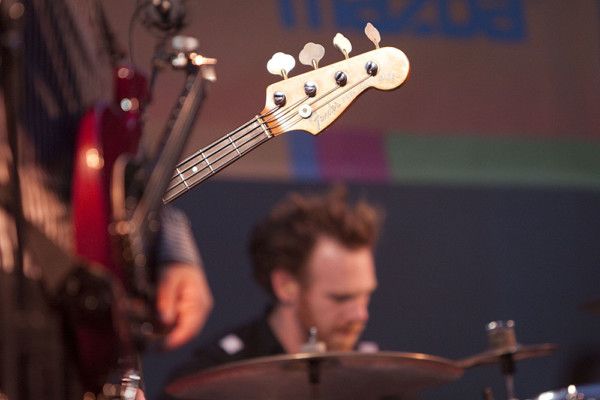Understanding Time-Feel Terminology

Q: There are many terms that apply to meter and pulse that I am a bit confused about. Eg. Cut time, half time, two feel, double time, double time feel; Also, how does one apply the metronome to these and how best to notate them. BTW, I have your two books and really love them! I was very happy to find some of your videos on NoTreble that demonstrated some of the exercises. Thank you for your support, encouragement, optimism, honest and direct teaching.
A: First and foremost, thank you for the kind words and for the great question! I’ll explain these variations in feel and meter as I understand them.
Common Time
This simply refers to the usual 4/4 time signature. Denoted with a ‘C’ on the chart in place of the time signature. There’s no difference in feel or how you read the chart from any chart in 4/4.
Cut Time
This is denoted by a ‘C’ with a vertical line through it, in place of the time signature. It can also just be written with a time signature of 2/2. This may seem confusing, as 2/2 is the mathematical equivalent of 4/4. Things are generally written in 2/2 or cut-time when they are at very fast tempos. This way, we are emphasizing 2 beats per bar, paced comfortably, rather than 4 very fast beats (i.e. we feel and emphasize the 2 half-notes instead of 4-quarter notes). The tricky thing here is that rhythmically speaking, we still have to read as if there were 4 fast quarter notes per bar. The written quarter note is still the same length in a cut-time tempo of 120 as a 4/4 tempo of 240. (the tempo marking on the chart will likely also state that “half-note = 120)
The real thing here is that the emphasis winds up being a little different. In a bar of 4/4, we have four pulses. The first being the strongest, the 3rd being slightly less than the 1st and 2nd beats are weak (ST-w-med-w). In a bar of cut time, we only have 2 pulses, which are felt as just strong and weak).
I find that a lot of up-tempo salsa and Latin jazz charts are written in cut-time.
Double/Half Time
Double time is the same as double-time feel and half time is the same as half time feel.
- Double Time: Using the word feel makes it more obvious as to what is intended. These devices are often used in solo sections. When you switch to double time, you will play as if the music was twice as fast BUT the chord changes keep moving at the same tempo. So, if you had one chord per bar at 100bpm and had to play a double-time feel, you would play it as if it was one chord every two bars at 200bpm (8 fast pulses per bar as opposed to 4 slow pulses, in 4/4 with one chord per bar)
- Half Time: As you would expect, in a half time feel, we now play half as fast but the chords still move at the same tempo as before. If we had one chord per bar at 100bpm, we would play as if we were playing a low 50bpm, but with one chord every two beats.
- I find it best to start tapping my foot at the new tempo and insert/delete imaginary bar lines in my minds eye. It can be disconcerting at first but you will likely acclimate to the new feel pretty quickly as the band sinks into it. The trick is to remember that the pulse of the chord changes never varies.
If it is intended that you actually play and read section twice as fast (or slow), it should be denoted with a “Quarter note = X tempo”. So, if the tune is at 100bpm and you suddenly see that the bridge has written “Quarter note = 200bpm”, then you will actually just count twice as fast in addition to playing twice as fast.
* Unless there is a denoted tempo change, the chords move at the same speed. it’s only the feel that is affected
2 Feel
This is generally used for the first few choruses of a tune before building into a normal 4/4 feel. It simply means to emphasize 2 notes per bar. In a jazz setting, this means that you will primarily just play half notes through the changes. Often, things will pick up at some point as this is generally just a way of making sure things start off mellow and have somewhere to go. It’s different from cut time inasmuch as it isn’t used to make reading or feeling the tune easier because it’s fast, but rather as a way to make sure things are nice and smooth, slow for a while. It’s a way of keeping things feeling open indefinitely until somebody starts emphasizing a 4 beat pulse (it doesn’t always have to go there, though).
A lot of jazz standards might be started in a 2-feel and then graduate to 4 after the head or during solos at some point (and often back down for the head out, which helps to give a nice arc to the song. …starting slowly, building to a crescendo and then bringing you back down for the head out (or maybe just the last A of an AABA form).
I know that this may be full of new terminology for some of you. Feel free to chime in with more questions or requests for clarification (in the comments below)! I hope you found this helpful.
Have a question for Damian Erskine? Send it to [email protected]. Check out Damian’s instructional books, Right Hand Drive and The Improviser’s Path.



